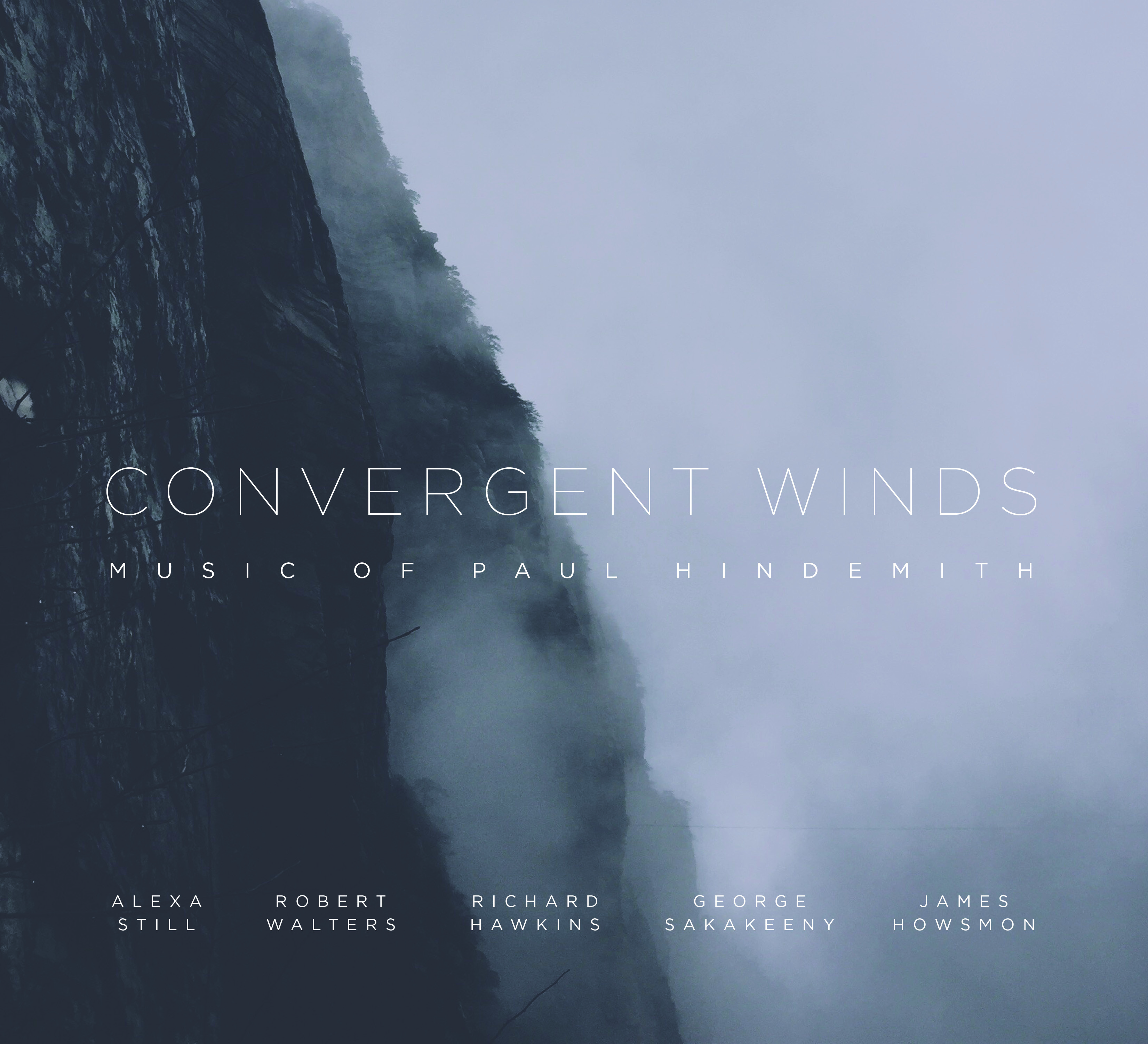by Jeremy Reynolds

That there are similarities isn’t surprising — Hindemith wrote all of the sonatas within a span of five years. The new album, available from Naxos Direct on June 15, comprises performances by Oberlin faculty of the sonatas for flute, oboe, English horn, clarinet, bassoon, plus the Echo for flute, all of them with pianist James Howsmon.
Alexa Still opens the disc with the 1936 sonata, a sunny, lyrical tribute to the expressive capabilities of the flute. Still’s sound floats with ease through the breezy melodies, never hurried, always warm. The consistency of tone between her different registers is particularly impressive: lower notes are full-bodied, higher pitches just as rich. Echo (1942), a minute-long treat filled with sweeping gestures and artful conversation between flute and piano, closes the disc, acting as a dessert.
Robert Walters begins the English Horn Sonata (1941) with a dark, somber sound. It’s weighty material, but Walters gives the music enough momentum to carry it through. The second movement has a more frolicking tune, and Walters and Howsmon give it an amiable, rolling gait. The rest of the performance displays a similar attention to structure: neither player gets bogged down in the details of Hindemith’s writing, bringing off the sonata with a genial spirit.
Similarly, the Oboe Sonata (1938) is lighter in character. Walters brings more wit than introspection to the first movement and a full measure of pathos to the second.
At eight minutes, the Bassoon Sonata (1938) is the shortest of the wind sonatas, but George Sakakeeny inflects each note with character and direction, making the most out of the music. The second movement is a highlight of the album. Howsmon’s relentless treatment of the march combines with Sakakeeny’s effortless lyricism to create a wonderfully intrepid mood.
The flute and clarinet sonatas are strikingly similar. They share some of the same melodic gestures and jovial spirit. Clarinetist Richard Hawkins’s sound glides from note to note in the longer tunes, and bounces cheerfully in the lighter, quicker movements. Like in the Bassoon Sonata, the march movement is quintessential Hindemith and brilliantly played by Hawkins. The third movement, “Sehr langsam” (very slowly), provides the emotional core of the sonata. Here, Howsmon’s playing is especially fine, slowly building and receding as the melodic and harmonic waves crest and trough.
Convergent Winds: Music of Paul Hindemith runs for 65 minutes and is available on Amazon and iTunes for pre-order.
Published on ClevelandClassical.com June 7, 2018.
Click here for a printable copy of this article



